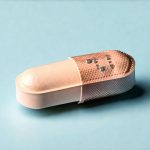The arrival of a baby is one of life’s most profound experiences, bringing immense joy and transformative change. However, alongside the overwhelming love and bonding, new mothers often encounter physical adjustments that can sometimes be unsettling. One common concern—and surprisingly frequent experience—is mild urinary incontinence. Many women find themselves unexpectedly leaking urine during everyday activities like coughing, sneezing, laughing, or even exercise. This can understandably lead to anxiety and questions about whether this is “normal” after childbirth. It’s crucial to understand that experiencing some degree of incontinence post-birth isn’t necessarily a sign of something being wrong; it’s often a temporary consequence of the incredible physical stresses pregnancy and delivery place on the pelvic floor muscles.
This article aims to provide comprehensive information about mild urinary incontinence following childbirth, exploring its causes, factors influencing its severity, what constitutes “normal,” and strategies for managing and improving pelvic health. It will emphasize that seeking support is not only acceptable but encouraged, and that a return to full bladder control is often achievable with the right approach. We’ll focus on understanding the physiological changes at play, differentiating between temporary post-partum incontinence and more persistent issues, and empowering women with knowledge about available resources and options for care. It’s important to remember everyone’s body responds differently to pregnancy and childbirth, so there’s no one-size-fits-all experience.
Understanding Postpartum Incontinence
Postpartum incontinence is incredibly common, affecting a significant percentage of new mothers. Studies suggest that between 30% and 60% of women experience some form of urinary incontinence in the first few months after childbirth. This prevalence stems directly from the physiological changes inherent in pregnancy and delivery. During pregnancy, the uterus expands, placing increased pressure on the bladder and pelvic floor muscles. Hormonal shifts also contribute, relaxing ligaments and joints to prepare for labor, which can inadvertently weaken support structures around the bladder and urethra. The weight of the growing baby and the stretching of the pelvic floor muscles are all significant factors.
Delivery itself – whether vaginal or Cesarean section – further impacts these areas. Vaginal delivery, in particular, can cause stretching and trauma to the pelvic floor muscles, ligaments, and nerves. Even a C-section isn’t without impact; the weight gain during pregnancy still stresses the pelvic floor, and the abdominal surgery can alter core strength and posture, indirectly affecting bladder control. It’s important to note that even women who have had no previous children can experience incontinence after their first delivery. If you are concerned about symptoms appearing after your first time, consider reading get a UTI. The initial months postpartum are a period of significant healing and readjustment for the body, and it takes time for these muscles and support structures to regain strength and function.
The type of incontinence most commonly experienced immediately post-birth is stress incontinence, where leakage occurs with physical exertion or pressure on the bladder – think coughing, laughing, lifting, or exercise. This happens because weakened pelvic floor muscles can’t adequately support the urethra, leading to involuntary urine release. Another type, urge incontinence (a sudden, strong urge to urinate followed by leakage), is less common immediately postpartum but may develop over time, particularly if there’s been nerve damage during delivery or pre-existing bladder sensitivity. UTI symptoms can sometimes mimic urge incontinence, so it’s important to rule those out.
Factors Influencing Incontinence Severity
Several factors can influence the severity and duration of postpartum incontinence. These aren’t necessarily indicators of something being wrong, but understanding them helps explain why experiences differ so widely:
- Type of Delivery: Vaginal deliveries generally have a higher initial risk of stress incontinence due to the stretching and trauma involved. However, even C-sections don’t guarantee immunity from postpartum incontinence.
- Length of Labor: Prolonged or difficult labor can place greater stress on the pelvic floor muscles and increase the likelihood of damage.
- Baby’s Birth Weight: A larger baby puts more pressure on the pelvic floor during delivery.
- Pre-Pregnancy Pelvic Floor Strength: Women with stronger pelvic floor muscles before pregnancy tend to recover faster and experience less severe incontinence. This highlights the benefits of prehab or preventative exercise before becoming pregnant.
- Number of Previous Vaginal Deliveries: Each vaginal delivery can incrementally weaken the pelvic floor, increasing the risk of incontinence.
- Pre-Existing Conditions: Conditions like obesity or chronic constipation can also contribute to increased pressure on the bladder and pelvic floor.
It’s essential to remember that these are just factors; they don’t determine the outcome. Many women with seemingly high-risk factors experience minimal incontinence, while others with lower risk factors struggle more. Individual anatomy, genetics, and overall health all play a role.
What is “Normal” Postpartum Incontinence?
Defining “normal” in this context can be tricky, as it’s subjective and varies from woman to woman. Generally speaking, mild stress incontinence immediately postpartum – leakage with exertion like coughing or lifting small objects – is considered relatively normal, especially within the first few weeks after delivery. This often resolves on its own as the pelvic floor muscles gradually regain strength. It’s reasonable to expect some degree of leakage during this initial healing period. However, “normal” doesn’t mean accepting it indefinitely.
If the incontinence is severe enough to significantly impact your quality of life – for example, if you’re avoiding activities you enjoy due to fear of leaking, or if you’re experiencing frequent and substantial leakage even with minimal exertion – then it’s important to seek professional guidance. Similarly, if the incontinence persists beyond several months postpartum without improvement, it warrants evaluation. Recovery time varies for each individual so don’t hesitate to reach out!
Here are some key indicators that suggest further investigation is needed:
- Leakage occurs even when resting.
- You experience urge incontinence (a sudden, strong need to urinate).
- You have pain or discomfort in the pelvic area.
- The incontinence is interfering with your daily activities and causing significant distress.
- You notice any changes in your bowel function alongside the incontinence.
Managing and Improving Pelvic Health Postpartum
Fortunately, there are many strategies for managing and improving postpartum incontinence:
- Pelvic Floor Exercises (Kegels): These exercises strengthen the pelvic floor muscles, helping to support the bladder and urethra. It’s best to learn how to perform them correctly from a physical therapist specializing in pelvic health. Incorrect technique can actually be counterproductive.
- Core Strengthening: A strong core provides overall stability and supports the pelvic floor. Exercises like planks, bridges, and gentle abdominal work can be beneficial.
- Proper Lifting Technique: When lifting anything (even your baby!), use proper form – bend at the knees, keep your back straight, and engage your core.
- Weight Management: Maintaining a healthy weight reduces pressure on the bladder and pelvic floor.
- Fluid Intake: Stay adequately hydrated but avoid excessive fluid intake, especially before bedtime.
- Avoid Constipation: Constipation puts extra strain on the pelvic floor. A diet rich in fiber and adequate hydration can help prevent it.
Most importantly, don’t hesitate to seek professional help. A physical therapist specializing in pelvic health can assess your individual condition, teach you proper exercise techniques, and develop a personalized treatment plan. Other healthcare professionals, such as your OB-GYN or a urogynecologist, can also provide valuable guidance and support. Frequent urination is common after childbirth so don’t be afraid to seek help from professionals. Remember that seeking help is a sign of strength, not weakness, and taking proactive steps to restore your pelvic health will contribute significantly to your overall well-being.





















